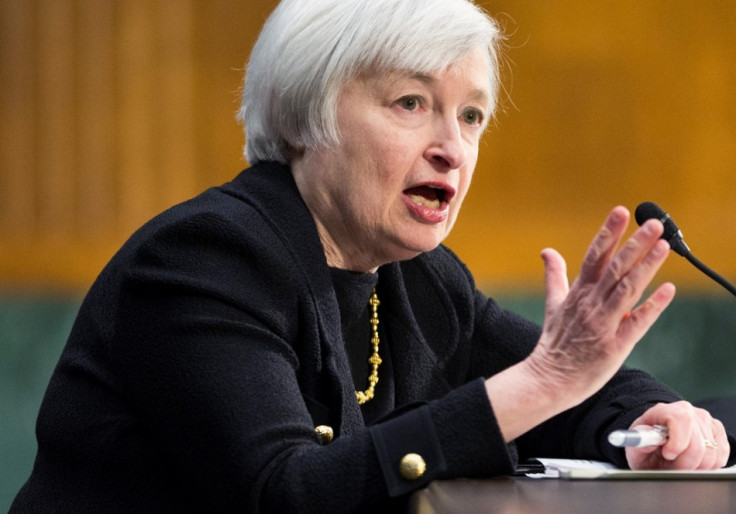Janet Yellen: Fed Reserve To Trim QE When US Economy Sustains Job Growth

US Federal Reserve Vice Chair Janet Yellen said on 14 November that she would push forward with the central bank's ultra-easy monetary policy until the US economy is strong enough to sustain job creation.
Answering questions before the US Senate Banking Committee, Yellen, the nominee to chair the world's most powerful central bank, acknowledged that the Fed's $85bn-a-month bond-buying programme could not continue forever.
However, she said the benefits of quantitative easing (QE) outweighed the costs at the moment.
Yellen reiterated that the asset-buying programme was not on any preset course. Any decision to trim QE would be based on economic data, she added.
Yellen also said that US equities and the housing market were not in bubble territory. She promised the Fed would work very hard to identify any unsafe investment behavior before financial stability was compromised.
During her testimony, which lasted a little over two hours, politicians quizzed Yellen about the Fed's strategy to prevent another financial crisis.
She replied saying that the Fed's approach ensures that the biggest US banks are flush with liquidity, which in turn makes those firms less unsafe.
In addition, other measures could be introduced to prevent a crisis. New rules for commodities trading on Wall Street and higher collateral and capital requirements for banks could be enforced, she said.
Yellen has worked as a policymaker at the central bank for over a decade. The US Senate could vote on her nomination next week.
"I consider it imperative that we do what we can to promote a very strong recovery," Yellen told the committee while defending the Fed's bond buys.
"I do not see the [bond-buying] program as continuing indefinitely. We ... are attempting to assess whether or not we have seen meaningful progress in the labor market. And what the [Fed's policy] committee is looking for is signs we will have growth that is strong enough to promote continued progress," the Vice Chair added.
Loosening Policy
The Fed cut interest rates to almost zero in late 2008, at the height of the financial crisis.
Since then, it has quadrupled the size of its balance sheet to around $3.8tn through three massive rounds of asset buys, designed to hold down longer-term borrowing costs.
The central bank's moves stimulated the US economy and global markets in the years following the financial crisis.
The US economy expanded by 2.8% in the July-September third-quarter, higher than the second-quarter's 2.5% growth rate and way above forecasts of a 2% expansion.
© Copyright IBTimes 2025. All rights reserved.






















